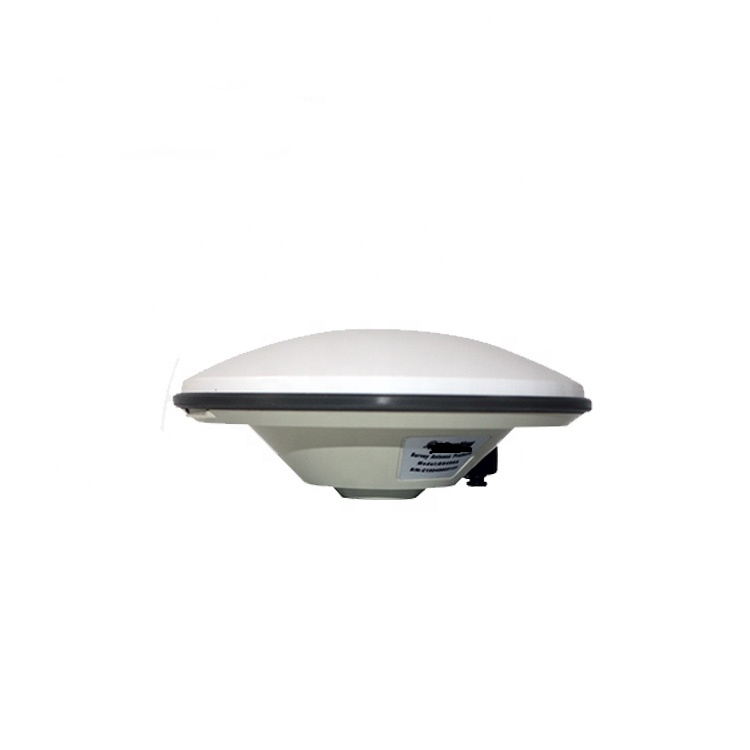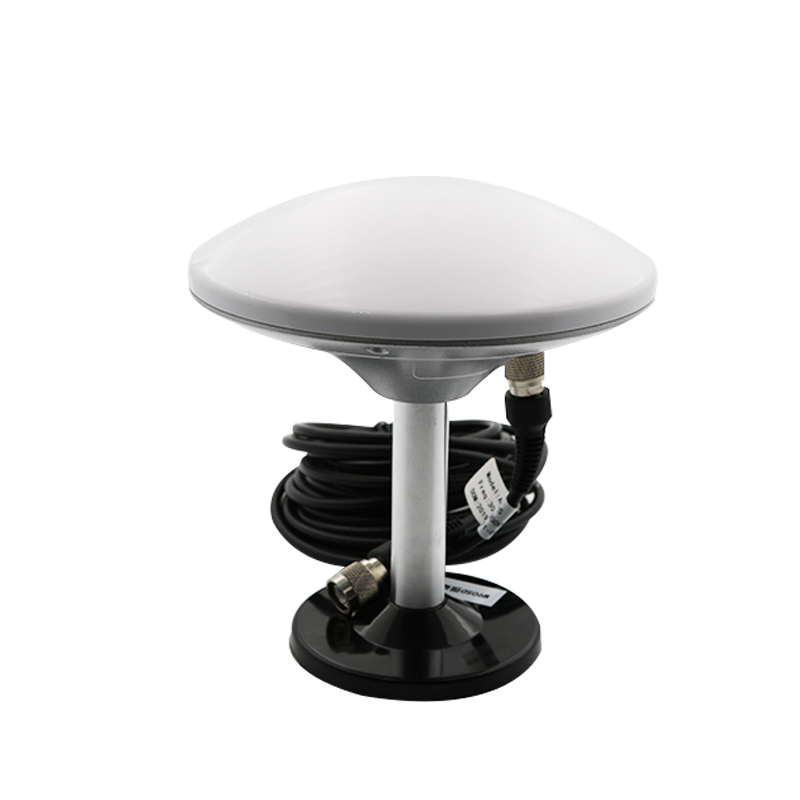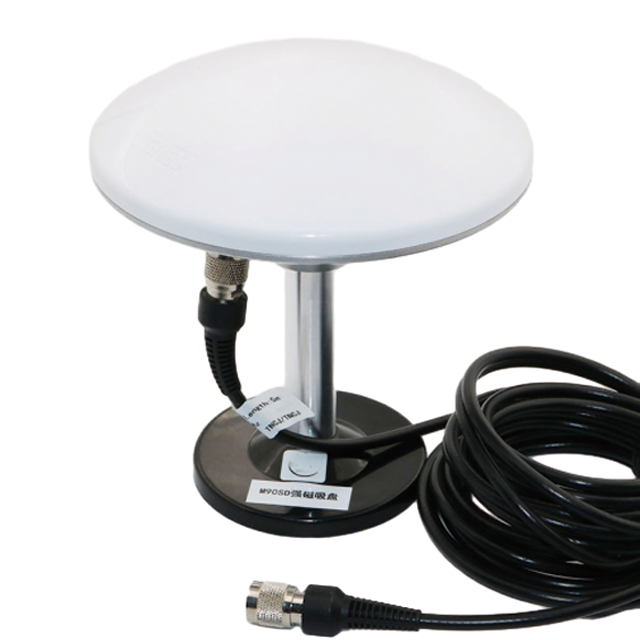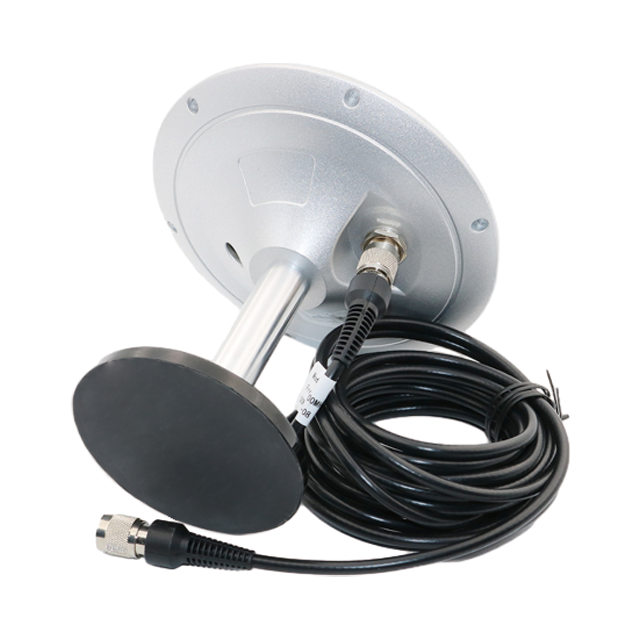5.1 Key Applications
5.1.1 Commercial Shipping
Commercial shipping is one of the largest and most important applications of multi - band GNSS marine antennas. Modern commercial vessels, such as container ships, tankers, and bulk carriers, rely heavily on accurate navigation to transport goods safely and efficiently across the world's oceans. Multi - band GNSS marine antennas provide the high - accuracy positioning required for route planning, collision avoidance, and berthing operations.
Route planning is a critical aspect of commercial shipping. By using accurate positioning data from multi - band GNSS antennas, ship operators can plan the most efficient routes, taking into account factors such as weather conditions, sea currents, and the location of other vessels. This helps to reduce fuel consumption, minimize travel time, and lower operational costs. For example, a container ship traveling from Shanghai to Rotterdam can use multi - band GNSS positioning to avoid areas with strong headwinds or rough seas, which would otherwise increase fuel usage and delay the arrival time.
Collision avoidance is another essential application. The International Regulations for Preventing Collisions at Sea (COLREGs) require vessels to maintain a safe distance from other vessels and avoid collisions. Multi - band GNSS marine antennas provide real - time positioning data that is integrated into the vessel's Automatic Identification System (AIS). AIS uses this data to track the position, speed, and course of nearby vessels, allowing the ship's crew to identify potential collision risks and take appropriate action. The high accuracy of multi - band GNSS positioning ensures that the AIS data is reliable, enabling the crew to make informed decisions in a timely manner.
Berthing operations also benefit from the accuracy of multi - band GNSS marine antennas. When a vessel is approaching a port or a dock, it needs to maneuver with extreme precision to avoid colliding with the dock or other vessels. Multi - band GNSS antennas provide the precise positioning data required for the ship's navigation system to control the thrusters and rudders, ensuring a smooth and safe berthing process. In some cases, multi - band GNSS is even used in automated berthing systems, where the vessel is controlled by a computer that uses the positioning data to maneuver the ship without human intervention.
5.1.2 Offshore Energy Industry
The offshore energy industry, which includes offshore oil and gas exploration and production, and offshore wind energy, is another major user of multi - band GNSS marine antennas. These industries require highly accurate positioning for a wide range of operations, from the installation of offshore platforms to the maintenance of subsea equipment.
In offshore oil and gas exploration, multi - band GNSS marine antennas are used to position seismic survey vessels. Seismic surveys involve sending sound waves into the seabed to map the geological structures below, which helps to identify potential oil and gas reserves. The positioning of the seismic survey vessel is critical for ensuring that the survey data is accurate and can be used to create detailed maps of the seabed. Multi - band GNSS antennas provide the high - accuracy positioning required to keep the vessel on the correct survey line, even in rough seas or areas with limited satellite visibility.
During the installation of offshore oil and gas platforms, multi - band GNSS marine antennas are used to position the platform and the installation vessels. The platform needs to be placed in a precise location on the seabed to ensure that it is stable and can access the oil or gas reserves. The installation vessels, which are used to transport and place the platform components, rely on multi - band GNSS positioning to maneuver the components into the correct position. The accuracy of the positioning data is essential for ensuring that the platform is installed safely and efficiently, reducing the risk of delays and cost overruns.
Offshore wind energy is a rapidly growing sector that also depends on multi - band GNSS marine antennas. The installation of offshore wind turbines requires precise positioning to ensure that the turbines are placed in areas with strong and consistent winds, and that they are spaced correctly to avoid interference with each other. Multi - band GNSS antennas are used to position the installation vessels and the wind turbine components during the installation process. After installation, the antennas are used to monitor the position of the turbines, which can shift over time due to the effects of waves and currents. This monitoring helps to ensure the safety and efficiency of the wind farm, as any significant shift in the turbine's position can affect its performance and increase the risk of damage.
In addition, multi - band GNSS marine antennas are used in the maintenance of offshore energy infrastructure. Subsea pipelines, cables, and other equipment need to be inspected and maintained regularly to ensure their integrity. Inspection vessels equipped with multi - band GNSS antennas use the positioning data to navigate to the exact location of the subsea equipment and to control remotely operated vehicles (ROVs) that perform the inspection and maintenance tasks. The high accuracy of the positioning data ensures that the ROVs can reach the target area precisely, reducing the time and cost of the maintenance operations.
5.1.3 Autonomous Marine Vessels
The development of autonomous marine vessels (AMVs) is one of the most exciting trends in the marine industry, and multi - band GNSS marine antennas are a key enabling technology. AMVs, which include autonomous ships, underwater vehicles (AUVs), and unmanned surface vessels (USVs), require extremely accurate and reliable positioning to operate safely and autonomously.
Autonomous ships are designed to navigate and operate without human intervention. They rely on a combination of sensors, including multi - band GNSS antennas, to perceive their environment and make navigation decisions. The high - accuracy positioning data from the multi - band GNSS antenna is used to determine the ship's position, speed, and course, which is integrated with data from other sensors such as radar, lidar, and cameras to avoid obstacles and follow the planned route. For example, an autonomous container ship traveling from a port to a offshore terminal can use multi - band GNSS positioning to stay on course, while using radar and lidar to detect and avoid other vessels, icebergs, or other obstacles.
AUVs are used for a wide range of applications, such as oceanographic research, underwater mapping, and military surveillance. These vehicles operate underwater, but they still need to surface periodically to receive GNSS signals and update their position. Multi - band GNSS marine antennas are used on the surface of the AUV to capture the signals, providing the high - accuracy positioning required to ensure that the AUV's underwater missions are carried out correctly. For example, an AUV used for underwater mapping can use multi - band GNSS positioning to determine its position when it surfaces, which is then used to correct the position data collected during the underwater mapping mission. This ensures that the resulting bathymetric maps are accurate and reliable.
USVs are unmanned vessels that operate on the surface of the water. They are used for applications such as environmental monitoring, border patrol, and search and rescue. USVs rely on multi - band GNSS marine antennas for positioning, as they need to navigate to specific locations and perform tasks without human intervention. The high reliability of multi - band GNSS positioning ensures that the USV can operate in challenging environments, such as coastal areas with strong currents or near - shore regions with limited satellite visibility. For example, a USV used for environmental monitoring can use multi - band GNSS positioning to navigate to a specific area of the ocean, collect water samples, and then return to the shore, all without human control.
5.2 Future Trends
5.2.1 Integration with Other Sensor Technologies
One of the key future trends in multi - band GNSS marine antennas is the integration with other sensor technologies, such as inertial measurement units (IMUs), radar, lidar, and cameras. This integration will create a more robust and reliable navigation system that can operate in even the most challenging marine environments.
IMUs are devices that measure the linear acceleration and angular velocity of a vessel. They can provide positioning data when GNSS signals are unavailable, such as when the antenna is blocked by a large wave or a nearby building. By integrating multi - band GNSS with an IMU, the navigation system can use the GNSS data to calibrate the IMU when signals are available, and then use the IMU data to continue providing positioning when GNSS signals are lost. This hybrid navigation system will significantly improve the reliability of positioning in areas with intermittent GNSS coverage, such as coastal cities or narrow straits.
Radar and lidar are used to detect obstacles and other vessels in the vicinity of the ship. By integrating multi - band GNSS with radar and lidar, the navigation system can combine the positioning data from the GNSS antenna with the obstacle detection data from the radar and lidar to create a more comprehensive view of the ship's environment. This will enable the system to make more informed navigation decisions, such as avoiding a collision with a nearby vessel or navigating around a shallow area. For example, if the radar detects a vessel that is on a collision course, the navigation system can use the GNSS positioning data to calculate the distance between the two vessels and determine the best course of action to avoid the collision.
Cameras can be used to capture visual images of the ship's surroundings, which can be used to identify objects and verify the data from other sensors. By integrating multi - band GNSS with cameras, the navigation system can use the GNSS positioning data to tag the visual images with the exact location where they were captured. This can be useful for applications such as port security, where the images can be used to monitor the movement of vessels and cargo, and for search and rescue operations, where the images can be used to locate missing persons or objects.
5.2.2 Miniaturization and Low - Power Consumption
As the marine industry moves towards smaller and more efficient vessels, there is a growing demand for miniaturized multi - band GNSS marine antennas with low power consumption. Miniaturization will allow the antennas to be installed on smaller vessels, such as small fishing boats, recreational yachts, and USVs, where space is limited. Low power consumption will extend the battery life of these vessels, which is especially important for USVs and AUVs that operate for long periods without being recharged.
Advancements in microelectronics and materials science are driving the miniaturization of multi - band GNSS marine antennas. For example, the development of microstrip patch antennas with smaller dimensions and higher efficiency is enabling the creation of compact antennas that can support multiple frequency bands. In addition, the use of new materials, such as carbon nanotubes and graphene, is helping to reduce the size and weight of the antenna elements while maintaining their performance.
Low - power consumption is being achieved through the development of energy - efficient RF front - end components and signal processing algorithms. For example, the use of low - power LNAs and filters that consume less energy while still providing high gain and low noise figure is reducing the overall power consumption of the antenna system. In addition, advanced signal processing algorithms that can reduce the number of computations required to process the GNSS signals are also helping to lower power consumption. These algorithms can be implemented using field - programmable gate arrays (FPGAs) or application - specific integrated circuits (ASICs) that are designed for low - power operation.
5.2.3 Support for New GNSS Constellations and Frequency Bands
As new GNSS constellations and frequency bands are developed, multi - band GNSS marine antennas will need to evolve to support these new systems. This will enable the antennas to provide even more accurate and reliable positioning services, as well as expand their coverage to new regions of the world.
One of the most significant new GNSS constellations is the BeiDou Navigation Satellite System (BDS) developed by China. BDS is currently in the process of expanding its global coverage, and it offers several new frequency bands that can be used for high - accuracy positioning. Multi - band GNSS marine antennas that support BDS will be able to take advantage of these new frequency bands, providing improved positioning accuracy in areas where BDS has strong coverage, such as Asia and the Pacific region.
Another new GNSS constellation is the Indian Regional Navigation Satellite System (IRNSS), also known as NavIC. IRNSS is designed to provide positioning services in the Indian subcontinent and surrounding regions, and it operates on several unique frequency bands. Multi - band GNSS marine antennas that support IRNSS will be able to provide more reliable positioning in these regions, which is important for the growing marine industry in India and neighboring countries.
In addition to new constellations, new frequency bands are also being added to existing GNSS systems. For example, the GPS system is planning to add a new frequency band, L1C, which is designed to improve the accuracy and reliability of positioning in urban and coastal environments. Multi - band GNSS marine antennas that support L1C will be able to provide better performance in these challenging environments, where multipath interference is a major issue.
To support these new constellations and frequency bands, multi - band GNSS marine antenna manufacturers need to adopt a flexible and scalable design approach. This involves using modular antenna elements and RF front - end components that can be easily modified or upgraded to support new frequency bands. For example, instead of designing a fixed set of antenna elements for specific frequency bands, manufacturers can use configurable patch antenna arrays that can be tuned to different frequencies through software or hardware adjustments. This modular design not only reduces the time and cost of developing new antennas but also allows existing antennas to be upgraded in the field to support new GNSS systems, extending their lifespan and reducing waste.
In addition, the signal processing algorithms used in multi - band GNSS marine antennas need to be updated to handle the new signals from these constellations and frequency bands. New algorithms may be required to decode the unique PRN codes and data formats used by new GNSS constellations, such as BDS and IRNSS. These algorithms also need to be optimized to combine signals from multiple constellations and frequency bands effectively, maximizing the accuracy and reliability of the positioning data. For example, algorithms that use advanced fusion techniques, such as Kalman filtering or particle filtering, can combine the strengths of different GNSS signals to provide a more robust position fix, even in challenging environments.
5.2.4 Enhanced Anti - Jamming Capabilities
With the increasing use of GNSS in critical marine applications, the risk of intentional jamming and spoofing attacks is also growing. Jamming involves transmitting strong radio signals to disrupt the reception of GNSS signals, while spoofing involves transmitting fake GNSS signals to deceive the receiver into calculating an incorrect position. These attacks can have severe consequences for marine vessels, such as causing collisions, grounding, or the loss of valuable cargo. To address this threat, future multi - band GNSS marine antennas will need to incorporate enhanced anti - jamming capabilities.
One of the key technologies for anti - jamming is adaptive beamforming. Adaptive beamforming uses an array of antenna elements to focus the antenna's radiation pattern on the desired GNSS satellites while nulling out the direction of the jamming signal. This allows the antenna to receive the weak GNSS signals even in the presence of strong jamming. For example, if a jamming signal is coming from a specific direction, the adaptive beamforming algorithm can adjust the phase and amplitude of the signals received by each antenna element to create a null in that direction, effectively blocking the jamming signal.
Another anti - jamming technology is the use of spread - spectrum techniques. GNSS signals already use spread - spectrum modulation, which spreads the signal over a wide frequency band, making it more resistant to narrow - band jamming. Future multi - band GNSS marine antennas can further enhance this resistance by using wider bandwidths or more advanced spread - spectrum codes. In addition, the use of frequency hopping, where the antenna switches between different frequency bands in a pseudo - random pattern, can make it more difficult for jammers to target the GNSS signals.
Spoofing detection is another important aspect of enhanced security. Multi - band GNSS marine antennas can use the differences between signals from multiple frequency bands and constellations to detect spoofing. For example, if a spoofed signal is transmitted on one frequency band but not on others, the receiver can compare the position calculated from the spoofed band with the position calculated from the other bands and identify the discrepancy. Advanced signal processing algorithms can also analyze the characteristics of the received signals, such as their signal strength, phase, and Doppler shift, to detect anomalies that indicate spoofing.
Conclusion
Multi - band GNSS marine antennas have emerged as a critical technology in the marine industry, providing the high - accuracy, reliable positioning required for a wide range of applications, from commercial shipping to offshore energy operations and autonomous marine vessels. Throughout this comprehensive overview, we have explored the key aspects of these antennas, including their design and construction, working principles, advantages and challenges, applications, and future trends.
In terms of design and construction, multi - band GNSS marine antennas are complex systems that require careful selection and configuration of antenna elements, such as stacked patch antennas and crossed dipole antennas, to support multiple frequency bands. The RF front - end, with its low - noise amplifiers and specialized filters, is essential for amplifying weak GNSS signals and rejecting interference. The enclosure and mounting of the antenna are also designed to withstand the harsh marine environment, with waterproof, corrosion - resistant materials and secure mounting hardware ensuring the antenna's durability and optimal signal reception.
The working principles of multi - band GNSS marine antennas revolve around the reception of electromagnetic signals from multiple GNSS constellations and frequency bands, the calculation of position using code - phase ranging and trilateration, and the mitigation of multipath interference through techniques like circular polarization and antenna arrays. These principles enable the antenna to provide accurate and reliable positioning even in challenging marine conditions.
The advantages of multi - band GNSS marine antennas are significant. They offer enhanced positioning accuracy by mitigating errors such as ionospheric delay and multipath interference, increased signal reliability by switching between frequency bands when signals are blocked or weakened, and support for multiple GNSS constellations, which increases the number of available satellites and improves coverage. However, these antennas also face challenges, including interference from other radio systems, the complexity of design and calibration, and the need to withstand the harsh marine environment's corrosive and dynamic conditions.
The applications of multi - band GNSS marine antennas are diverse and growing. In commercial shipping, they are used for route planning, collision avoidance, and berthing operations, helping to improve efficiency and safety. In the offshore energy industry, they play a crucial role in the positioning of seismic survey vessels, offshore platforms, and wind turbines, as well as the maintenance of subsea infrastructure. For autonomous marine vessels, they are a key enabling technology, providing the precise positioning required for safe and autonomous operation.
Looking to the future, multi - band GNSS marine antennas are poised to undergo significant advancements. Integration with other sensor technologies, such as IMUs, radar, and cameras, will create more robust hybrid navigation systems that can operate in even the most challenging environments. Miniaturization and low - power consumption will make these antennas more accessible for smaller vessels and unmanned systems, expanding their range of applications. Support for new GNSS constellations and frequency bands will further improve accuracy and coverage, while enhanced anti - jamming capabilities will address the growing threat of intentional interference.
As the marine industry continues to evolve, driven by factors such as global trade growth, the expansion of offshore renewable energy, and the development of autonomous technologies, the demand for multi - band GNSS marine antennas will only increase. Manufacturers will need to continue innovating to overcome the existing challenges, such as reducing design complexity and improving environmental durability, while also keeping pace with new technological advancements and regulatory requirements.
In conclusion, multi - band GNSS marine antennas are an indispensable component of modern marine navigation and operations. Their ability to provide accurate, reliable positioning in the harsh marine environment makes them essential for ensuring the safety, efficiency, and sustainability of marine activities. As technology continues to advance, these antennas will play an even more critical role in shaping the future of the marine industry, enabling new applications and unlocking new possibilities for exploration, commerce, and environmental protection on the world's oceans.




































































 Language
Language
 En
En Cn
Cn Korean
Korean

 Home >
Home > 








 18665803017 (Macro)
18665803017 (Macro)













